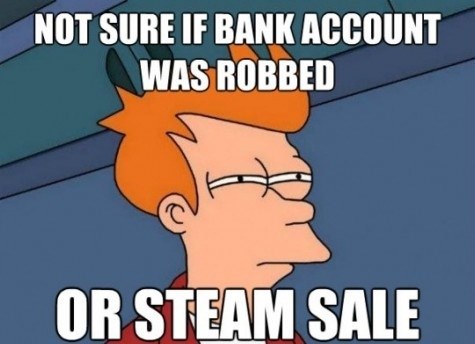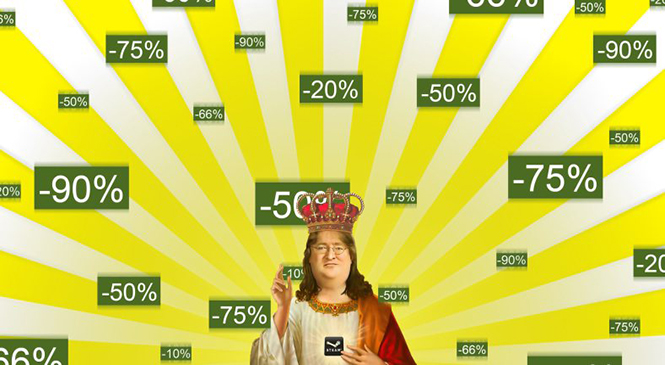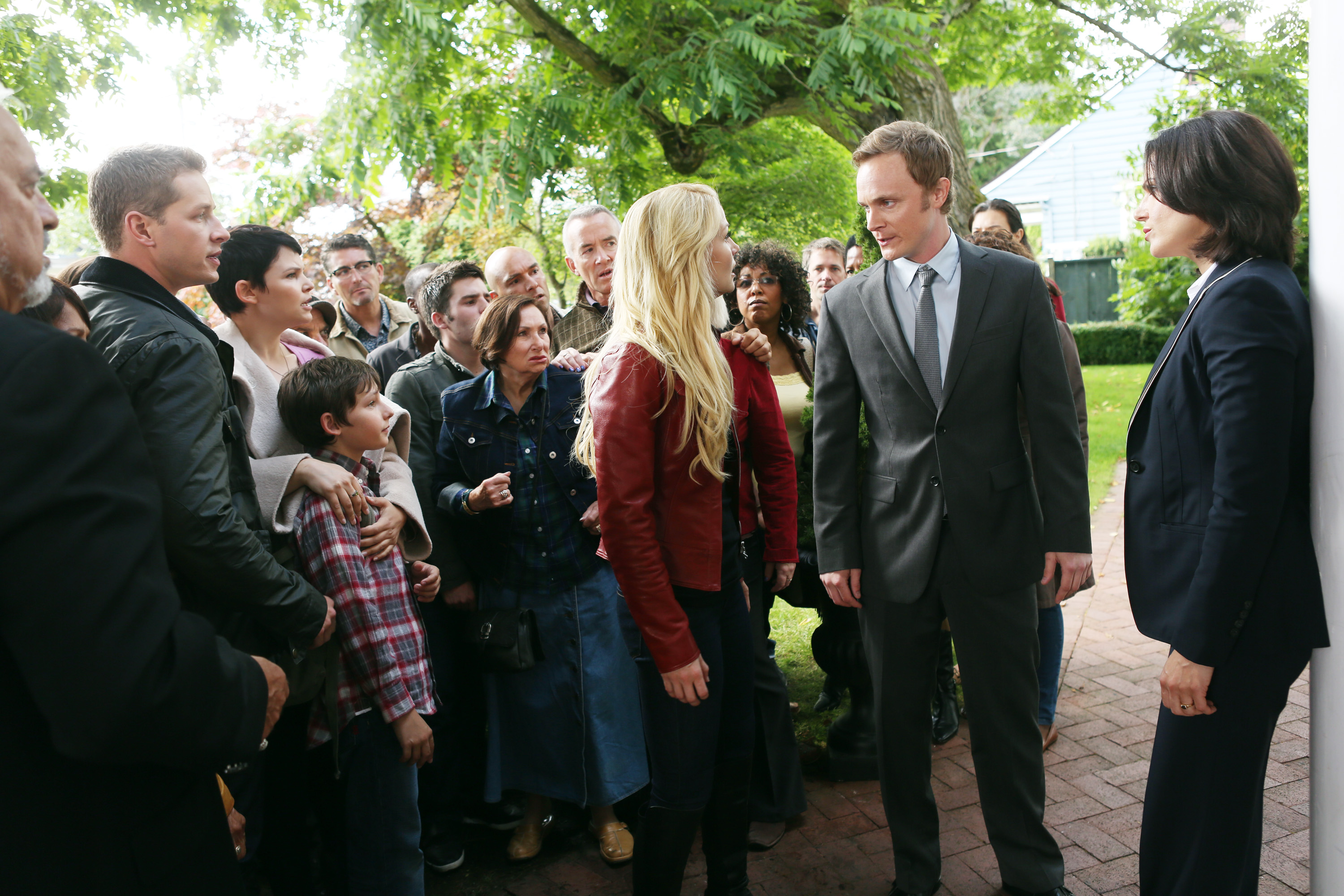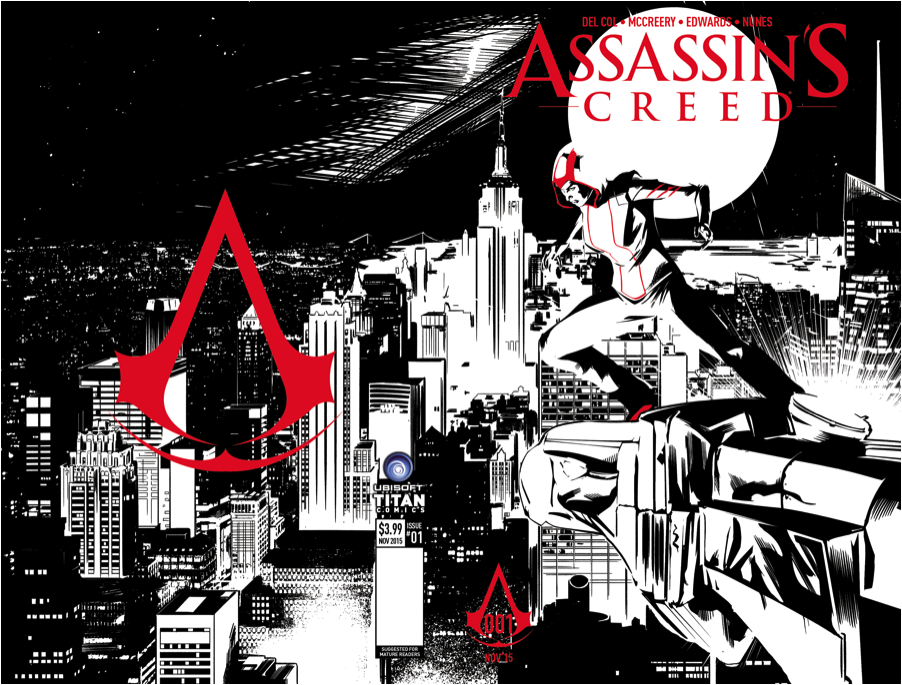Steam Monster Summer Sale 2015: Monster Mistakes

Steam. If you don’t know Steam, chances are you probably don’t play very many games on your PC. Steam is a digital games distribution platform headed by the Valve corporation. Valve in and of itself is a well established game development studio with such heavyweight swingers as the Portal series, the Half Life series, the Left4Dead series, Counter Strike, and the MOBA (Multiplayer Online Battle Arena) DOTA2 (Defense of the Ancients).
Steam was developed as a way to not only get Valve’s games into the eager hands of customers in a way that was easier, faster, and generally more reliable than physical retail store fronts, it also became a grand nexus hub for the distributions for indie games as well. A safe haven for new or small developers that would never have gotten on the shelves in a physical retail store. Hell, even Minecraft, a game that’s become synonymous for gaming youth culture, probably would have just been an oddity long forgotten if it had to rely on securing physical storefront shelf space to get any sort of distribution set up.
Now Steam is getting known far and wide by PC gamers. Multiplayer games on Steam servers hold millions of players each day. And one thing that every person that uses steam looks forward to, is Steam’s notoriously amazing sales. Many of these sales have gone off without much of an issue and the biggest sales are generally Summer and (inversely) Winter sales. During these sales, gamers can find hundreds of games with their prices slashed anywhere from 30%-90% off. This time, however, there seems to be a massively overwhelming number of things going absolutely wrong for the game distribution platform. Let’s start at the beginning.
The first thing that went wrong, was that the date was leaked. Back in the end of May, Steam released a post in Russian on the international social media website VK. You might not think that this is much of an issue, and on its face, could seem as a good way to let potential customers know ahead of time when the best deal to get games is going to be. But — yes there’s a but — keeping in semi-chronological order, we’ll get to the down side of this in due time.
Next up, Valve has been doing a lot of things to spice up the sales periods to keep it entertaining as well as a great deal overall. Last winter sale, they introduced new badges (little rewards that players can put up on their profiles to display achievements and such) as well as a fun little browser based system to recycle old badges if you wish to do so for chances at prizes and other rewards. They also did a version of this for last year’s summer sale as well. In an effort to make this particular Steam Summer Sale even more interesting Valve developed a small idle game for it. They call it “Monster Summer Game: Summer Sale Event June 11-20, 2015“.

Steam’s sale game is a MASSIVELY multiplayer browser game. Each game takes a lobby of 1,000 players at a time to play. You get in, you click on monsters to attack them. The monsters drop coins, you spend those coins on in game items. The items give you power-ups and bonuses, you then use those power-ups and bonuses to click on more monsters. It’s a classic looping idle game system; idle games being the genre described by the actions above.
By clicking on the monsters, the game records how many players defeat them. And when players, all of the millions of them in waves of hundreds and thousands, click enough, it unlocks sales for everybody (and possibly some sales individually). This is a fun thing on its face. I mean, playing a video game to get more sales is a brilliant idea to get players more involved than just with their wallets. But sadly, it’s hard to implement. With the popularity of Steam sales, well over a million players are trying to log into this game at once and Steam’s servers, as robust as they are, are not handling the challenge well. Even though hundreds of thousands of players are able to log into the idle game, many more are left with the “Unable to connect” error screen. Out of the 50 or so times in two days that I’ve tried to log in to see what the basic game featured, I was only able log onto the system once.
Now, remember when I mentioned that they leaked out the time of the Steam sale and why that might have been a little bit of a terrible idea? Several price watch websites, including Steam Spy and steamprices.com have started to report a rather nasty trend that some game developers are doing to thwart the discounts on the Steam distribution site.
As it turns out, some game companies have decided to thwart some of the Steam sale’s deals by hiking their prices up and then “discounting” the new higher price down to the game’s normal price. There are some cases where they hike the price then give it a heavy discount as to make it look like the deal is much better than it is. As reported by some consumers, some of the games store pages say that you are getting 75% off the game’s title when in actuality, you are getting more like 10% off (75% off the “New” price being only 10% off the old price).
That way it looks like a sale, and they will be shown with all the other sales, but in reality, it’s not a sale at all. Users have also noticed this from several games and debates about the practice are starting to emerge in both Steam’s discussion forums as well as several new pages opening up on Reddit. Some of the games reported did this last month as soon as the Steam sale dates were leaked. Some other studios hiked their prices up the day of the sale.
[su_note note_color=”#eeeeee”]A side note on pricing. Steam does not dictate the prices on their distribution service. In their business FAQ section they mention that the metrics that Steam receives from it’s users can help suggest price points for titles, but the language does shuffle the ultimate responsibility of price setting onto the developer/publisher of whatever game is put up to be sold. [/su_note]
Surprisingly, this isn’t just an issue with the usual suspects of shady dealings that lurk in the shadows of Steam’s store and have polluted the waters of Steam’s Greenlight program (a program based on connecting games in development with interested consumers). Steam is known for being so open that a lot of disreputable “developers” dip their dirty greedy paws into the pot by doing shameful things like asset flipping. Asset Flipping is basically buying a bunch of pre-made development kits that contain models, programming, buildings, terrain, and other items you’d find in a game, and then turning around and selling it themselves to unwary gamers.
[su_youtube url=”https://youtu.be/5svAoQ7D38k” responsive=”no”][youtube = https://youtu.be/5svAoQ7D38k][/su_youtube]
As a consumer, I can’t help but wonder if this is some sort of protest that developers, or the more likely culprit, game studio producers, have against the price slashing cuts that Steam puts in its generally amazing mind blowing sales. On one hand, if your game on Steam is suddenly going for a bit less than expected for a week, you are going to get just that: Less money from each sale. In the terms of the developer, this could be a bit of a problem, especially for newly released games, as they have a massive overhead to get out from under. They have to pay back the advance loans that the publisher had given them, so lower base cost means that they have to sell more copies to pay the producers back.
Then again, and the opposite side is the consumer. Chances are, if they are waiting for the game to be on sale, they aren’t buying the copy in the first place. If they are waiting for the game to be on sale, they’ve always waited for games to go on sale. In other words, by letting the game be sold temporarily for cheaper, you reach a brand new audience that may not have ever purchased a copy to begin with. If your game is good, that information spreads to their friends, word of mouth, more people buy and will probably be inclined to buy even after the sale is over. The issue is complicated and by revolting, the only people that really get hurt, are your consumers.
There have also been a few typos and clerical errors plaguing these early days of the Steam Sale. AAA developer Rockstar seems to have accidentally sold copies of its popular GTA V for $30 for a few minuets during the summer sale. After which, they realized their “mistake” and replaced their sale with bundled deals for $59.99 removing the ability to buy just GTA V by itself entirely. There is no word from Rockstar on whether or not this was intentional.
It is very hard to get an accurate list of games that have just suddenly raised their prices since the time of the Steam Summer Sale was leaked. The only people that really and truly have that data is Valve. I have reached out to Valve’s press correspondent and webmasters for comment, but have not received any information about any of the struggles happening with the Summer sale.
With any luck, this will get better with time and the Summer Sale will be as glorious as years past. Even with the hiccups, there are a lot of really good games going for great discount prices. For instance, I picked up Crisis 2 for a great price. The sale is up from the 11th to the 21st of this month and according to the leak, will have a couple of days of “post sales” after the 21st. It’s still a time for the PC Master Race to rejoice and sing the praises of Steam.
-N00basaurus

![]()




